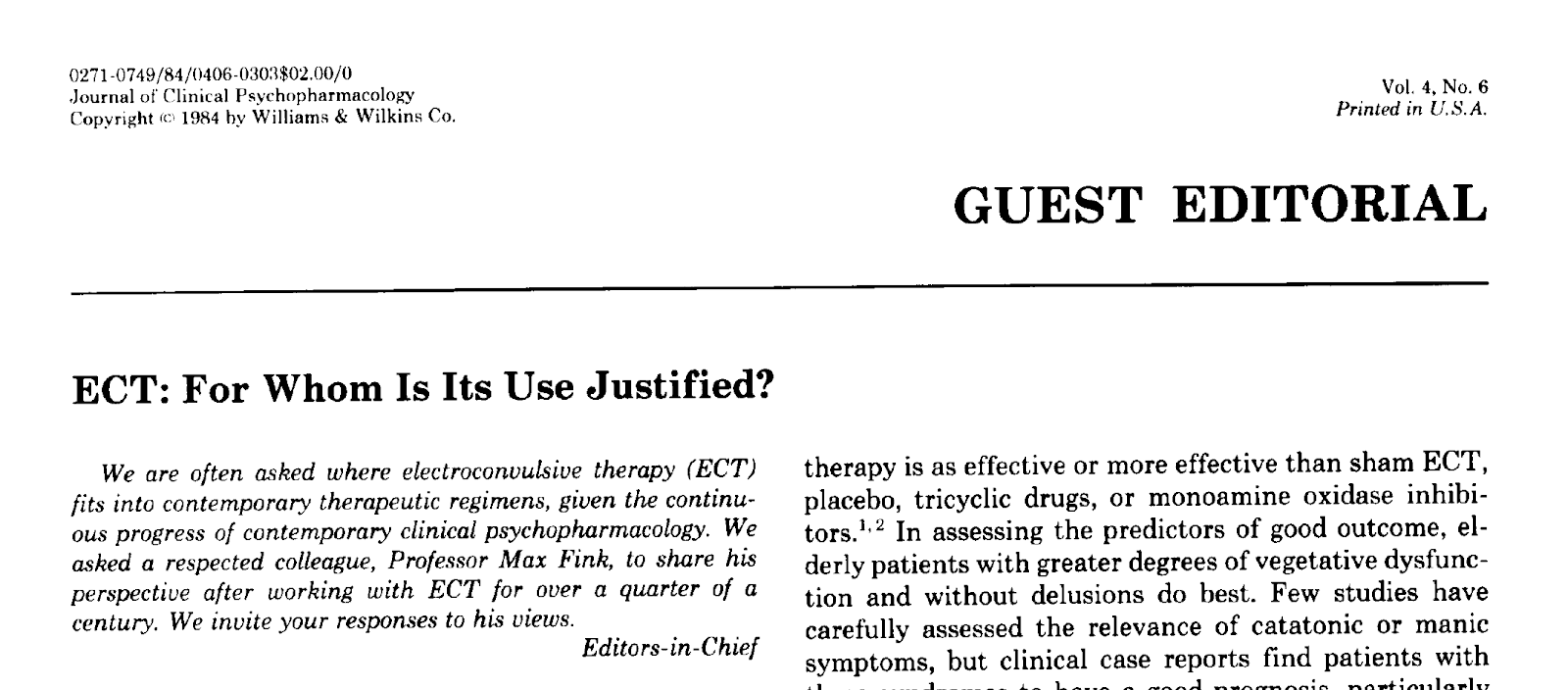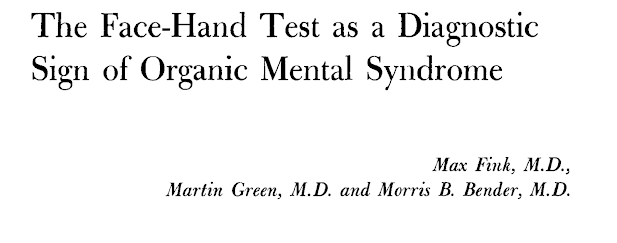Classics in ECT: Max Fink Editorial From 1984

"Classics in ECT" brings you this editorial from Dr. Max Fink, 1984: ECT : for whom is its use justified? Fink M. J Clin Psychopharmacol. 1984 Dec;4(6):303-4. PMID: 6511995 The pdf is here . The editorial is here: Here is a Max Fink classic, with his perspective on clinical indications as well as the sad state of ECT practice and training in the USA in the early 1980s. I'm sure you will enjoy reading it, and reflecting on how things have changed for the better in the intervening decades, in no small part thanks to his efforts.





